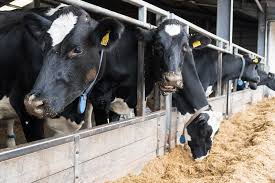A South Dakota dairy cattle herd has tested positive for highly pathogenic avian influenza (HPAI), also referred to as bird flu. This is a startling discovery. Producers of animals are concerned because this is the first instance of the virus being found in a dairy in the state. The HPAI case was verified to the Animal Industry Board (AIB) and the South Dakota Department of Agriculture (DANR) on April 9, 2024, by the National Veterinary Services Laboratory (NVSL) of the United States Department of Agriculture.
Although the primary target of avian influenza is birds, this example emphasizes how, in some situations, the virus can infect other species. Since December 2021, outbreaks in chicken flocks across the United States have been caused by the particular strain in question, H5N1. Although commercial turkey flocks in South Dakota have already been confirmed to have HPAI cases, the transfer to dairy cattle adds another layer of complexity to the continuing issue.
It has been predicted, according to state veterinarian Beth Thompson. “We’ve been observing what’s been happening in some of the southern and southwestern states for producers here in South Dakota,” Thompson stated in a press statement. “We know that highly pathogenic avian influenza has been in the United States for going on three years.” Several states have been affected by the current outbreak; instances in cattle herds were first reported in Kansas and Texas, followed by South Dakota.
Investigations are still ongoing to determine the source of HPAI transmission to the dairy herd in South Dakota. Although contact with sick birds or polluted settings is the main way that the virus spreads, it is unknown exactly how it spreads in this case. In order to reduce the risk of exposure, experts stress the significance of biosecurity measures on farms. This covers steps to keep dairy cows and wild birds away from one another as well as good hygiene procedures for farm workers.
Although HPAI has been found in the dairy herd, health officials insist that the milk supply is still safe to drink. Pasteurization is a mandated heat treatment method that efficiently eradicates the avian influenza virus and is required for all milk sold commercially. The fact that there is no increased risk to the public’s health from ingesting dairy products is emphasized by the Centers for Disease Control and Prevention (CDC).
“USDA continues to emphasize that pasteurization kills the virus and that milk and dairy products are safe to consume,” said a statement from Marv Post, Chairman of South Dakota Dairy Producers. The event does, however, serve as a reminder of the continuous difficulties presented by HPAI.
Dairy farmers are being advised to keep a cautious eye out for any indications of sickness by the South Dakota Animal Industry Board. Cattle that have avian influenza may exhibit neurological symptoms, decreased appetite, lethargy, respiratory trouble, and sudden death. In the event that producers feel their animals may have HPAI infection, they should speak with their herd veterinarian very away. The impacted dairy herd’s HPAI effects are still being felt. In an effort to stop the outbreak’s spread, the South Dakota Department of Agriculture is seeking to contain it. This could include putting the contaminated herd under quarantine and possibly putting sick animals down. Programs for financial aid are also offered to impacted growers.
The avian influenza outbreak’s dynamic character is highlighted by the discovery of HPAI in a dairy herd in South Dakota. Even while there is still little risk to human health, the animal business may suffer greatly financially. To stop the virus’s spread and safeguard the public’s and animals’ health, ongoing attention to detail and biosecurity precautions are essential.







